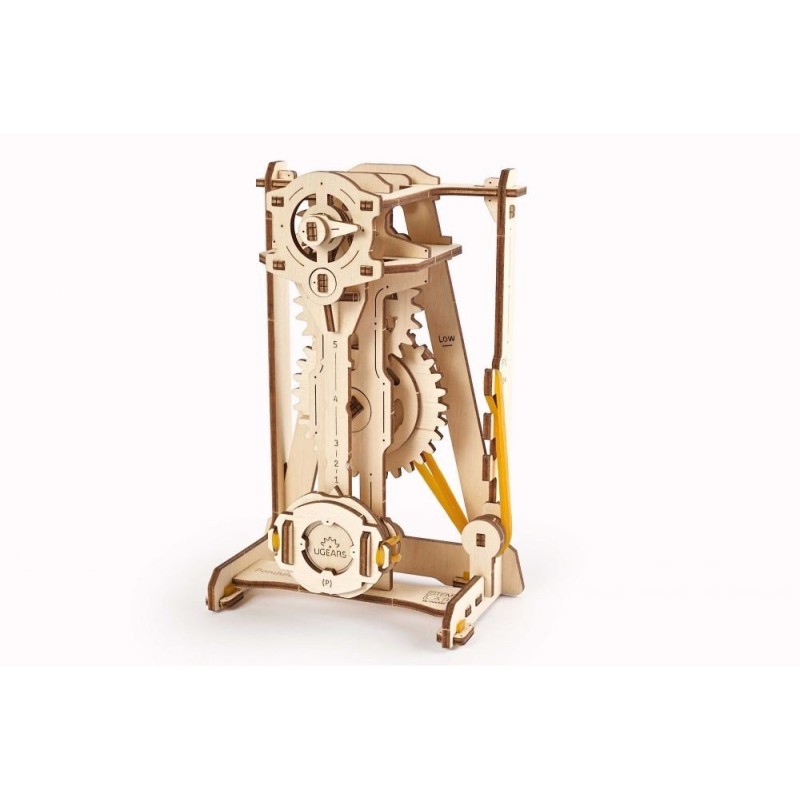- Out-of-Stock














The Pendulum is a stylised educational model, an interactive study guide to the mechanism, only for learning its essentials and principles of working. The pendulum is one of the basic and most reliable time measuring mechanisms. Its working principle is based on the model's constant amplitude oscillation under the force of gravity (weight) and potential energy (tension force) of the rubber band. UGears 70133
The rubber band powers the mechanism of the model and compensates for the pendulum's oscillations' kinetic energy loss. The device is animated by means of gear unit with a windup wheel.
The model has an anchor escapement controlling the frequency of oscillations, a weight, a scape-wheel, gearing, rubber band, ratchet, and pawl reducing operation error. The model has several means to control the frequency of oscillations: the weight of the pendulum bob, the vertical position of the weight on the pendulum, and the tension of the rubber band.
The first study of the pendulum was implemented by Galileo Galilei, an Italian engineer in the end of the 16th century. He described the property of the pendulum to preserve the consistency of the oscillations. The first person to use a pendulum in a mechanical clock and ensure a steady rate was a Dutch physicist Christiaan Huygens back in the 17th century.
Pendulums are mainly used in mechanical clocks as an element of a launch mechanism and the way to provide a steady rate. In the musical sphere, metronomes that have pendulums as their chief constructional element, help musicians practice playing to a regular tempo. Pendulums are also used in geological surveying, seismography, sports, and laboratory research in mechanics and physics.
The mechanism of the Pendulum is composed of:
The Pendulum is developed to serve as a learning tool rather than a puzzle.
No product available!
Flat USB cable A - micro-B USB with a length of 1 m, cable in orange
No product available!
No product available!
PCB and programmed layout for a 3-axis CNC generator. AVT5422 A +
No product available!
No product available!
Camera module 18 Mpx with AR1820HS sensor working with Raspberry Pi. It offers a video resolution of up to 4912x3684 pixels at 15 fps. ArduCAM B0164
No product available!
No product available!
A stand that uses the phenomenon of magnetic levitation. It can lift objects weighing up to 300 g. Power via USB with 5V
No product available!
No product available!
Assembled universal 5V power module. AVT1895 / 5 C
No product available!
LED 3 mm Yellow Diffused, LC 2mA, 60 degree angle; light intensity 100 mcd (2mA) (1.9V); df 589nm
No product available!
No product available!
EDC Speaker cable 10 m, 2 x 0.35 mm red-black colour
No product available!
No product available!
Case dedicated to Orange Pi Zero Plus2 H3 and Orange Pi Zero Plus2 H5 computers. Enables the installation of an expansion module. Orange Pi OP0011
No product available!
No product available!

The Pendulum is a stylised educational model, an interactive study guide to the mechanism, only for learning its essentials and principles of working. The pendulum is one of the basic and most reliable time measuring mechanisms. Its working principle is based on the model's constant amplitude oscillation under the force of gravity (weight) and potential energy (tension force) of the rubber band. UGears 70133
